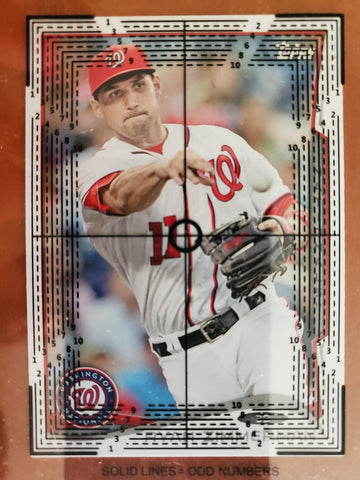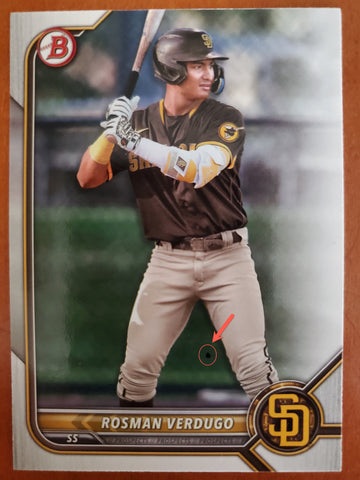
14 Factors That Card Grading Companies Like PSA Use to Grade Trading Cards
, by David Riska, 8 min reading time
We DONATE 3% of all Online Sales to Junior Achievement USA

, by David Riska, 8 min reading time
Sports card collectors abound, welcome to this in-depth breakdown of the top factors used by sports card grading companies. Sports card collecting has experienced a resurgence in recent years, and grading has become an integral part of the hobby. Card grading companies play a crucial role in determining the condition and value of sports cards, and they use a comprehensive set of criteria to evaluate each card. Today, we'll take a closer look at the key factors that these grading companies consider when assigning grades to sports cards.
The first factor that grading companies assess is centering. Centering refers to how well the image on the card is positioned within the borders. In general, a well-centered card has equal margins on all sides, while a poorly centered card may have off-centering issues, with one or more borders significantly thicker or thinner than the others. Centering is crucial because it affects the card's overall aesthetics and visual appeal. Grading companies use precise measurements to determine centering and assign grades based on the degree of deviation from perfect centering.

The surface quality of a sports card is another critical factor in the grading process. Grading companies carefully examine the card's surface for any imperfections, such as scratches, scuffs, creases, or print defects. A card with a flawless surface will receive a higher grade than one with visible flaws. The presence of surface damage can significantly impact a card's grade, as collectors generally seek cards in pristine condition.
Corners are a crucial aspect of card grading, as they are susceptible to wear and damage. Grading companies inspect the corners of each card to check for any signs of wear, rounding, or creasing. Cards with sharp, square corners will receive a higher grade, while those with damaged or rounded corners will be graded lower. Corner integrity is essential because it reflects the overall handling and care a card has received throughout its existence.
The edges of a sports card are also scrutinized during the grading process. Grading companies look for any imperfections, such as chipping, dings, or roughness along the edges. Cards with clean, smooth edges will receive higher grades, while cards with visible edge damage will be graded lower. Like corners, the condition of the card's edges is indicative of how it has been handled and stored over time.
Print quality is a factor that can significantly impact a card's grade. Grading companies assess the sharpness, clarity, and overall quality of the card's printing. Cards with vibrant, well-centered, and well-printed images typically receive higher grades. Print defects, such as off-centering, misprints, or ink smudges, can lower a card's grade. Collectors highly value cards with exceptional print quality, as they are more visually appealing and desirable.
The surface gloss and texture of a card are evaluated as well. Some cards are designed to have a glossy or textured finish, while others have a matte appearance. Grading companies consider these factors when assigning grades. Cards with a consistent, even surface gloss or texture will receive higher grades, as they are more visually pleasing. Inconsistencies or defects in the surface finish can lead to a lower grade.
Creases and wrinkles are significant flaws that grading companies carefully inspect for. A crease is a permanent fold or indentation in the card, often caused by mishandling or improper storage. Wrinkles are surface deformities that can result from bending or pressure. Cards with creases or wrinkles are typically assigned lower grades, as these defects can significantly detract from their overall condition.
Stains and discoloration can negatively affect a card's grade. Grading companies look for any signs of ink stains, water damage, or discoloration on the card's surface. Cards with pristine surfaces and vibrant colors receive higher grades, while those with stains or discoloration will be graded lower. Stains and discoloration are often a result of environmental factors and can diminish a card's visual appeal.

Authentication is a critical step in the grading process. Grading companies verify the authenticity of the card to ensure it is not a counterfeit or altered in any way. They examine various security features, including holograms, serial numbers, and other unique identifiers provided by the card manufacturer. Authenticity is a fundamental aspect of card grading, as collectors want assurance that they are purchasing genuine cards.
The overall presentation of a sports card is a subjective factor that grading companies consider. This includes factors like aesthetics, appeal, and eye appeal. Cards that have a striking design, vibrant colors, and exceptional visual appeal may receive a slightly higher grade, even if they have minor imperfections in other areas. Collectors often value cards that are visually appealing and well-presented.
The age and rarity of a card can also influence its grade. Vintage cards, which are older and harder to find in high-grade condition, may receive more lenient grading standards than modern cards. Grading companies take into account the historical significance and scarcity of a card when assigning grades. Rare and iconic cards are often highly sought after by collectors and can command premium prices.
The popularity and demand for a specific card or player can impact its grade as well. Cards featuring highly sought-after athletes or iconic moments in sports history may tend to receive higher grades, reflecting their desirability in the market. Grading companies consider the current market trends and collector preferences when evaluating cards.
The expertise of the professional graders at grading companies plays a vital role in the grading process. Graders undergo extensive training and have a deep understanding of the hobby's standards and nuances. Their expertise allows them to make informed judgments about a card's condition and assign accurate grades. The consistency and reliability of grading companies' grading standards are essential for maintaining trust within the hobby.
Different grading companies may use slightly different grading scales, but most adhere to a scale that ranges from poor to gem mint. Each grade corresponds to a specific numeric value, with gem mint typically representing a perfect card (e.g., a grade of 10). The grading scale provides a standardized way to communicate a card's condition to collectors. Grading companies follow their established grading scales to ensure consistency in their evaluations.
Collectors should consider grading fees and turnaround times when choosing a grading company. Different companies may offer various pricing tiers and turnaround options, ranging from economy services with longer wait times to expedited services with higher costs. Collectors must weigh the cost and time factors against their specific needs and preferences when selecting a grading company.
The grading of sports cards is a meticulous process that involves the evaluation of multiple factors mentioned above. It’s probably true that grading trading cards is as much of an art as it is a science, but we are guessing that might change a bit with the introduction of AI in the grading process (which is already here). In any case, these factors collectively contribute to a card's assigned grade, which directly impacts its value in the collector's market. Grading companies play a vital role in providing collectors with a standardized and trustworthy way to assess card condition, authenticity and value.


